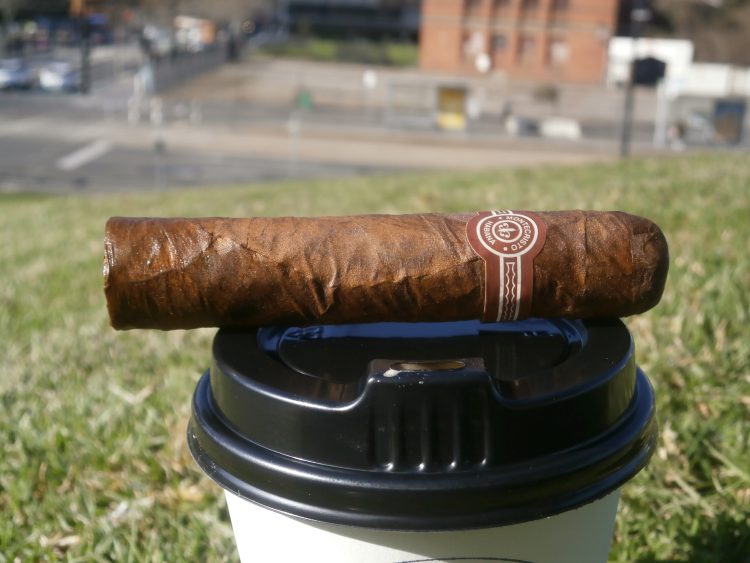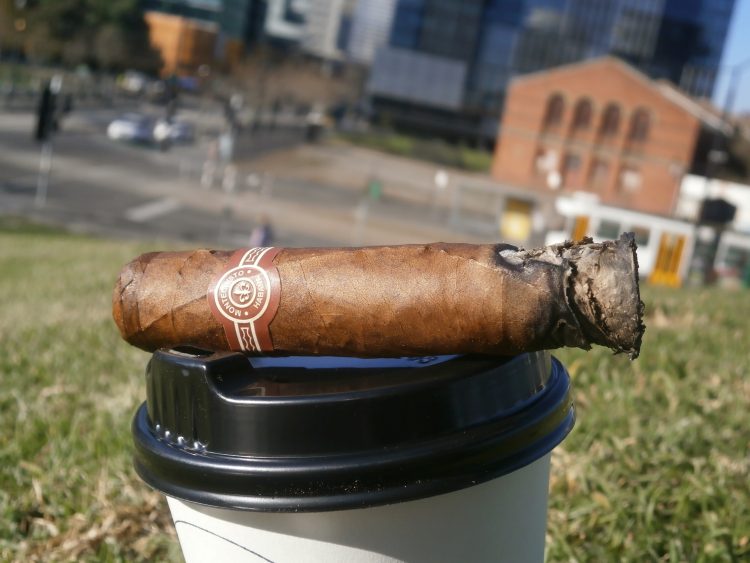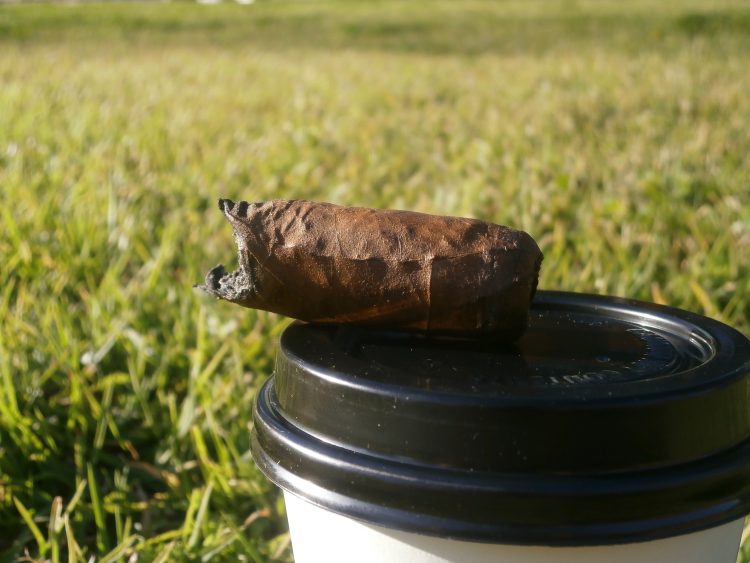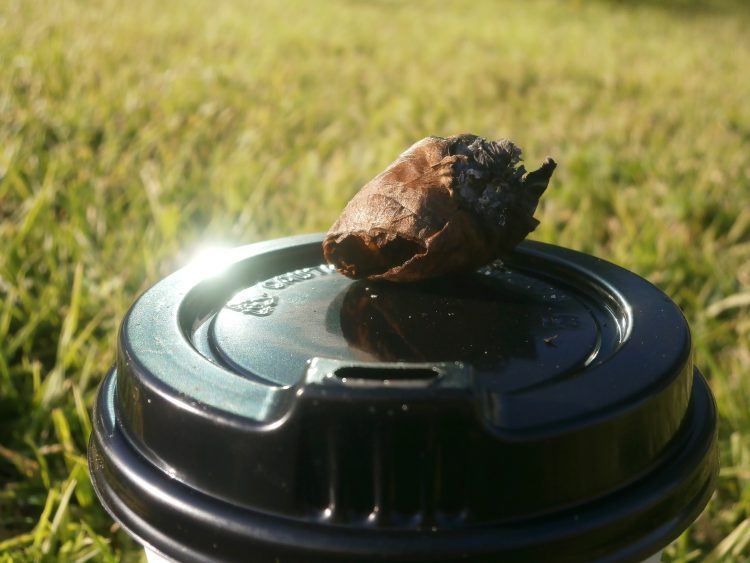It is a crisp winter’s day in the docks, and a rare appearance of the sun has drawn me out for a cigar. Although the orb is shining the day is not warm, and something short is called for lest my fingers go numb holding it: the order of the day is a well-aged Montecristo Petit Edmundo from 2008.
The fact that this cigar has reached a stage where it could be considered “well aged” comes as something of a shock to me; I still consider the Edmundo to be the controversial new kid on the block, and the petite version came out a few years after that did. Quite without noticing it, time appears to have passed me by.
The cigar is bitter from first light, with a sour aftertaste. There is a bean element, dry espresso: it is the aroma of a bag of coffee beans more than it is the flavour of the brewed stuff.
It’s an odd sensation, approaching the age that your parents were when you first knew them: you begin to see their actions (which at the time seemed to be the inscrutable follies of the gods) in the light of your own ridiculous antics, and they begin to make a lot more sense.
The event that I think of as my first memory took place in the town of Goroka, deep in the highlands of Papua New Guinea. I am sure that it is a manufactured memory, implanted from years of hearing the tale told by my mother whenever she needed an example of my father’s gross brutality; there is no way that I would have been allowed to witness the events in question, and it’s debatable whether or not I was even born at the time. Nevertheless, thirty some years later I can envision it quite clearly.
The highlands of the Papua were a wild place in the 1980s (as they are today). Cannibalism had only been officially stamped out a decade or so earlier, and it was not uncommon for spear wielding men in war paint to flag down cars on the highway and demand a toll for passing through their area. The kina was the official currency, but real transactions – dowries, bribes, ransoms and whatnot – were all conducted in pigs. There were a lot of dogs about and, although they were domesticated in the sense that they hung around the houses and depended on humans for food, they did not have owners as we understand them in the west.
There was one dog in particular that my family thought of as ours, a blonde vaguely Labrador looking mongrel that my mother had christened Crumpet. Our house was on stilts in the Queenslander style, and underneath it was a great pile of junk, the discarded odds and ends of several previous occupants. I have a distinct memory of being taken down there to see Crumpet, who, heavily pregnant, had lain down on some old newspapers to begin her labours. I remember her panting, looking up at me with her eyes, not able or willing to lift her head.
I have an image, too, of after the birth; of a pile of nine pink, hairless puppies clambering over each other to suckle from their mother’s teat. The final image is of my father. As I recall it he and my mother had a heated debate before he finally declared that “there were enough mangy strays in the world,” and headed under the house. Crumpet raised her head weakly as he found an old hessian sack amongst the junk pile, her look turning to confusion as he scooped up her puppies one by one and placed them in it. She did not resist: she trusted him.
I watched from the veranda as he filled an old tin bucket with water and carried it out into the backyard. He dumped the hessian sack in it unceremoniously, and held it underwater for a minute or so, presumably until he felt the movement stop. For reasons unknown he emptied the corpses out onto the grass and left them in the sun to dry while he dug the hole: nine little pink balls, their wispy blonde fur bedraggled in the sunlight.
Of course, none of it is real. The family annals are vague on dates, but at most I would have been two years old at the time of the puppy incident; a slobbering infant, rather than the stoic figure I picture watching the massacre dispassionately from the back veranda, Napoleon in OshKosh B’gosh. Nevertheless, old brains play tricks, and that one is mine: a vivid recollection of dead dogs. As I recall Crumpet got over it well enough, but always gave my father a wide berth from then on.
Halfway through the cigar the bitterness has subsided. It is still a little sour, but main note is a muddy sort of earthiness. There is also some straw involved. Years after the puppy incident, now living in China, my older sister tried to build a mud brick house in the back yard (no doubt inspired by the mud huts of the Papuan highlands). She only got one wall about two foot high before a big rain disolved the thing, but my sense memory remains, and this one is real. The flavour in this cigar is the smell of my sister’s mud bricks drying in the sun.
My phone rings: it’s a recruiter, and it takes me ten minutes or so to dislodge him. When I return to the cigar it has gone out. Once relit, it is very bitter, but with one of the most distinct black jelly-bean aniseed flavours I have ever had in a cigar.
The very end is bitter tar, underpinned by a deeply aromatic herb, star anise, perhaps. I smoke it till I can’t smoke no more. At all times the Montecristo Petit Edmundo was rough, brutish almost. Even at seven years old it could still use a decade or so more in the dark.
Nonetheless, a very decent effort from old Montecristo. Better than a No. 4.



